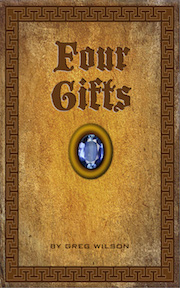Review: Mr. Rogers Documentary a Heartfelt Study in Kindness
 Saturday, July 21, 2018 at 3:00PM
Saturday, July 21, 2018 at 3:00PM By Greg Wilson/Anderson Observer (Updated July 21 after second viewing)
“Kindness in words creates confidence. Kindness in thinking creates profoundness. Kindness in giving creates love.” - Lao Tzu
“There are three ways to ultimate success: The first way is to be kind. The second way is to be kind. The third way is to be kind.” ― Fred Rogers
Quietly, deliberately, the new documentary “Won’t You Be My Neighbor” is a gentle ride that begins by putting a lump in your throat and ends with your reaching for tissues to wipe away big tears.
 The documentary will resonate with those who remember “Mr. Rogers Neighborhood,” either from their own childhood or those of their children or grandchildren.
The documentary will resonate with those who remember “Mr. Rogers Neighborhood,” either from their own childhood or those of their children or grandchildren.
The show, which was first broadcast in 1968, aimed squarely at and speaking directly to young children, through a medium mostly populated with loud and violent programming aimed at the little ones.
My wife and I, both too old to have been part of the audience of the show, found ourselves watching it anyway. My wife said she found it calming and quiet. My experience was the same. There is something mesmerizing about the program, even today.
Those who did grow up with the show, including director-actor Judd Apatow, agree.
“All my philosophies go back to Mr. Rogers,” said Apatow in an recent interview. “I feel like that simple ideology is not forefront enough in our culture – kindness, compassion, wanting the other person to be happy.”
Fred Rogers’ message was simple: “Knowing that we can be loved exactly as we are gives us all the best opportunity for growing into the healthiest of people.”
As one of Mr. Rogers' producers says in the film: "If you take all of the elements that make good television and do the exact opposite, you have ‘Mister Rogers' Neighborhood.’ Low production values, simple set, unlikely star. Yet it worked."
The set at the studios of WQED-TV public television station in Pittsburgh was indeed as simple as Mr. Rogers message; a 1950s-inspired living room and a “Neighborhood of Make Believe” populated by puppets in trees, clocks and castles which almost appeared to have been constructed by children.
And yet it all came together and worked, as filmmaker Morgan Neville said, because of one thing.
"I think it was because of him," Neville said in an interview promoting the film. "Because of the trueness of his message and the way he was able to communicate with kids. He created this really unique vision that was not only ahead of its time and apart from its time, but is unique in history. I mean, people are still not doing the things he was doing on his show."
The movie is about the Fred Rogers we all saw on television, with just enough personal background to fill in some of the gaps on his motivation for the show.
The opening sequence finds Mr. Rodgers at the piano explaining how he want to help children navigate through the modulation and key changes of life. Some are easy to manage, he said, but others are much more tricky. Mr. Rogers especially wants to help children find ways to work through the feelings that come with such tricky changes in life.
From the earliest shows where as the voice of the puppet Daniel the Striped Tiger he asks” “What does assassination mean?” (This program ran just after the killing of Robert Kennedy on the campaign trail), to his call to “look for the helpers” in the wake of the 9/11 attacks, Mr. Rogers is a calm voice assuring children - and the rest of us - that even when things are bad, there is hope.
If “Sesame Street” helped teach a generation (or two) of children the letters of the alphabet and how to count, “Mr. Rogers Neighborhood” taught children the A-B-Cs of how to deal with their anger, hurt and fears that were part of their emotions, and encouraged them to find grown ups who they trusted to help.
Mr. Rogers approach grew out of his own deep faith. A Presbyterian minister, ordained to be an evangelist to television, Mr. Rogers brought a message that was clearly in line with Christian teaching without ever being sectarian or exclusionary. His message seemed imbued with the biblical “fruit of the Holy Spirit:” peace, patience, kindness, gentleness, joy, forbearance, goodness and self-control.
Mr. Rogers was all of these things, and brought a calm settling gravitas to this message. He held no truck for those who promoted racism, and commercialism, degrading themes or violence in children’s programming. And he was nice, something that was as lacking then as it is now.
He was largely oblivious to his critics, a point made clear in the movie through a clip of Mr. Rogers on an early “Late Night with David Letterman” in which he shared a Polaroid of him standing close with Eddie Murphy. Murphy’s “Mr. Robinson’s Neighborhood” was a urban-projects parody of Mr. Rogers show, and often featured Murphy (who also changed into a sweater) on the run from the police or a landlord. Mr. Rogers said that while he didn’t like some of them, he embraced Murphy, who was thrilled to meet him (“I just met the real Mr. Rogers!”).
“Some of [the parodies] aren’t funny, but a lot of them are done with real kindness,” Rogers says in the film. Rogers’s wife Joanne says the parodies that made fun of his philosophy were the only ones which offended him.
Among those mentioned in the film are Fox News, where a number of news readers and commentators blamed Mr. Rogers as a progressive who is responsible for today’s “entitled young people.” Fox clearly misses the Christian core teaching of the value that all are children of God, which is a key element of Mr. Rogers central message.
The film reminds us that opposition from the far edges of the political right were nothing new to Mr. Rogers.
During a hearing before a U.S. Senate subcommittee led by Sen. John. O. Pastore, who was pushing the committee to defund public television in 1969, Mr. Rogers offered this:
“This is what I give. I give an expression of care every day to each child, to help him realize that he is unique. I end the program by saying, ‘You’ve made this day a special day, by just your being you. There’s no person in the whole world like you, and I like you, just the way you are.’ And I feel that if we in public television can only make it clear that feelings are mentionable and manageable, we will have done a great service for mental health. I think that it’s much more dramatic that two men could be working out their feelings of anger ― much more dramatic than showing something of gunfire.”
“I’m supposed to be a pretty tough guy, and this is the first time I’ve had goose bumps for the last two days,” Sen. Pastore said, who had never seen Mr. Rogers’s show and who had said going into the hearing he had little intention of funding public television. “Looks like you just earned the $20 million.”
Mr. Rogers gentle answers to an aggressive committee chair may have single-handle saved public television in the Unites States.
And it is this gentle, kind, almost childlike approach and curiosity that appealed to the children. Throughout the movie, clips of his interaction with children is nothing short of magical.
In his book, “The World According to Mr. Rogers,” he writes:
“In the external scheme of things, shining moments are as brief as the twinkling of an eye, yet such twinklings are what eternity is made of -- moments when we human beings can say "I love you," "I'm proud of you," "I forgive you," "I'm grateful for you." That's what eternity is made of: invisible imperishable good stuff.”
“Won’t You Be My Neighbor,” offers 93 minutes of bright, shining moments or imperishable good stuff.
The movie is currently playing at Cherrydale Cinemas in Greenville. An excellent inteview with Mr. Rogers appeared in Equire magazine in 2017
 Editor |
Editor |  Post a Comment |
Post a Comment | 




Reader Comments